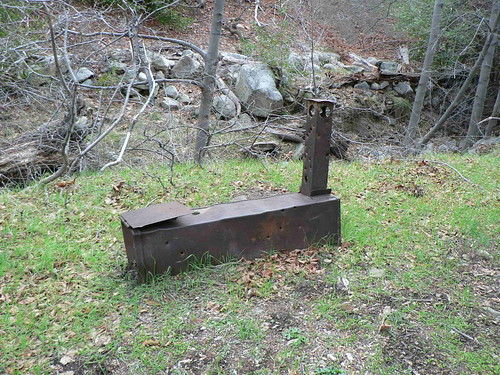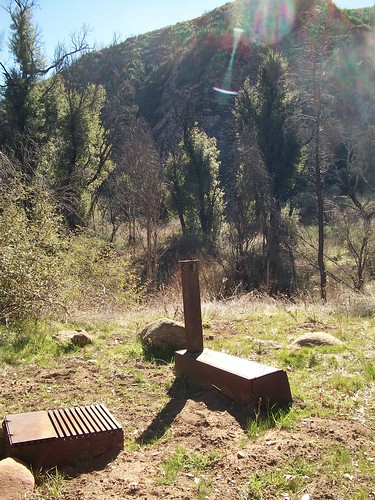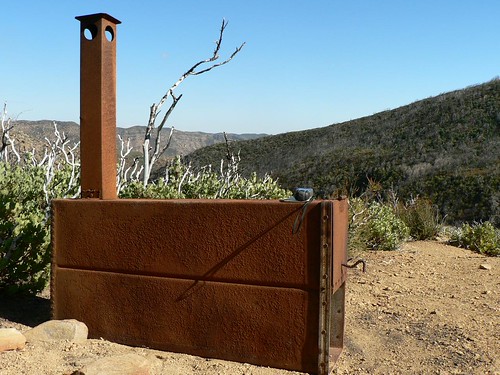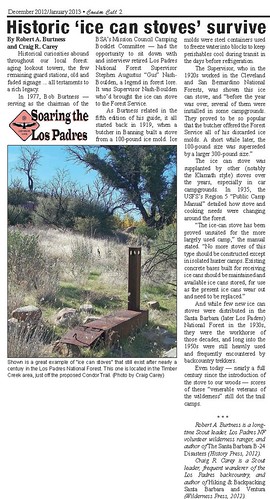“Venerable Veterans of the Wilderness”
Recently I had the pleasure to collaborate with Bob Burtness on a short article about ice can stoves for the Sierra Club’s regular “Soaring the Los Padres” column. Every other month, this column details the great work being done by the Condor Trail Association and some of the features along the Condor Trail. The Burtness/Carey piece appears in the latest issue of the Condor Call. You can view the article here, but for your added convenience I’m also including it below.
Historical curiosities abound throughout our local forest: aging lookout towers; the few remaining guard stations; old and faded signage … all testaments to a rich legacy.
In 1977, Bob Burtness — serving as the chairman of the BSA’s Mission Council Camping Booklet Committee — had the opportunity to sit down with and interview retired Los Padres National Forest Supervisor Stephen Augustus “Gus” Nash-Boulden, a legend in forest lore. It was Supervisor Nash-Boulden who’d brought the ice can stove to the Forest Service.
As Burtness related in the fifth edition of his guide, “it all started back in 1919,” when a butcher in Banning built a stove from a 100-pound ice mold. Ice molds were steel containers used to freeze water into blocks to keep perishables cool during transit in the days before refrigeration.
Supervisor Nash-Boulden, who in the 1920s worked in the Cleveland and San Bernardino National Forests, was shown this ice can stove, and “before the year was over, several of them were installed in some campgrounds. They proved to be so popular that the butcher offered the Forest Service all of his discarded ice molds. A short while later, the 100-pound size was superseded by a larger 300-pound size.”
The ice can stove was supplanted by other (notably the Klamath style) stoves over the years, especially in car campgrounds. In 1935, the USFS’s Region 5 “Public Camp Manual” detailed how stove and cooking needs were changing around the forest.
“The ice-can stove has been proved unsuited for the more largely used camp,” the manual stated. “No more stoves of this type should be constructed except in isolated hunter camps. Existing concrete bases built for receiving ice cans should be maintained, and available ice cans stored, for use as the present ice cans wear out and need to be replaced.”
And while few new ice can stoves were distributed in the Santa Barbara (later Los Padres) National Forest in the 1930s, they were the workhorse of those decades, and long into the 1950s were still heavily used and frequently encountered by backcountry trekkers.
Even today — nearly a full century since the introduction of the stove to our woods — scores of these “venerable veterans of the wilderness” still dot the trail camps.
Robert A. Burtness is a long-time Scout leader, Los Padres NF volunteer wilderness ranger, and author of The Santa Barbara B-24 Disasters (History Press, 2012).
Craig R. Carey is a Scout leader, frequent wanderer of the Los Padres backcountry, and author of Hiking & Backpacking Santa Barbara and Ventura (Wilderness Press, 2012).





Leave a Reply